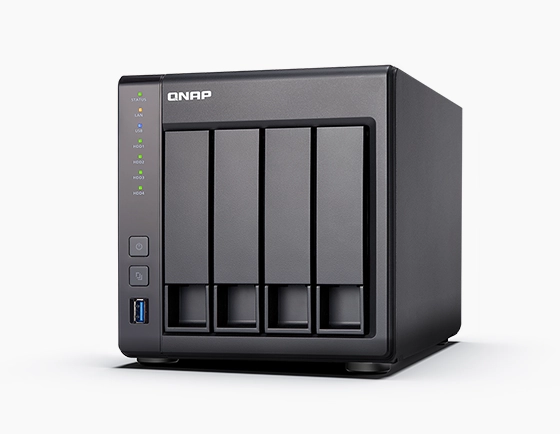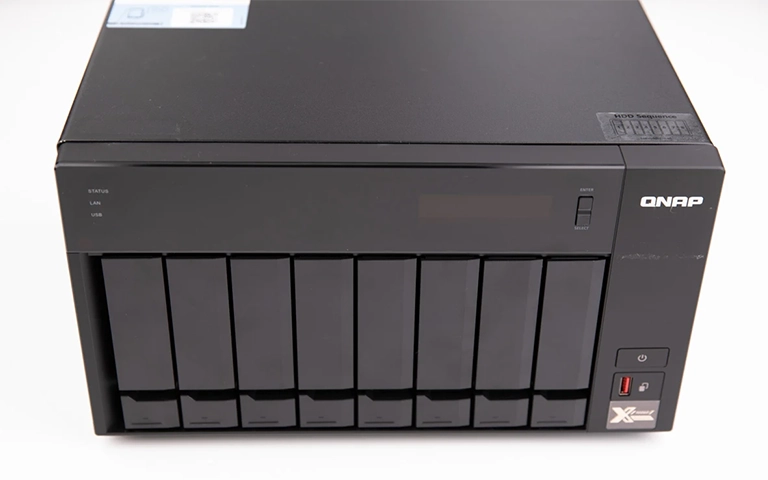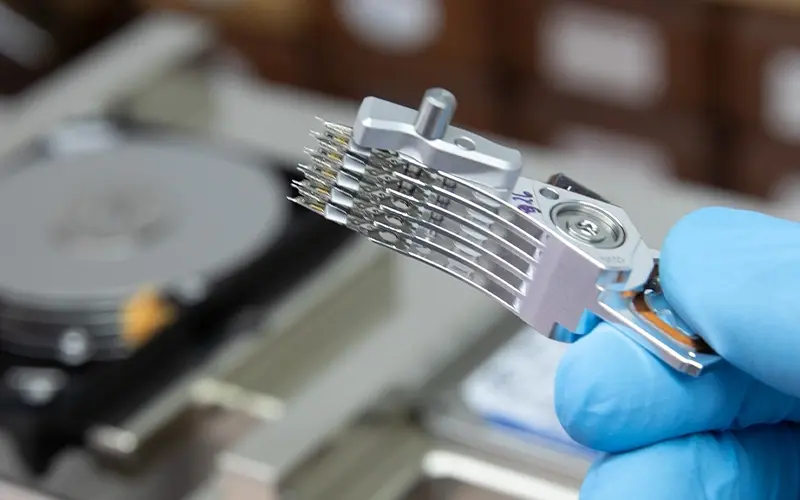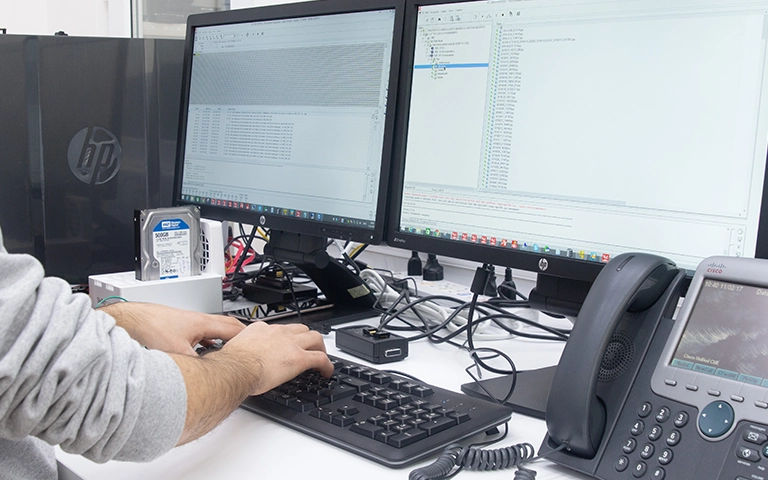In this real-world case study, we explore a complex data recovery scenario involving a QNAP NAS with an 8-drive RAID 5 array managed via mdadm, a powerful Linux utility for RAID management.
This case highlights the importance of expert handling when a RAID failure occurs, especially with thin-provisioned volumes and physical drive damage.

The Setup: QNAP NAS with Thin-Provisioned RAID 5
Our client operated a high-performance QNAP NAS for storing critical research data. The system was configured as:
RAID level: RAID 5
Drive count: 8 x 4TB HDDs
Total usable space: ~28TB
Volume type: Thin provisioning
Management: Linux-based mdadm utility
The NAS held years of irreplaceable data for a private research institution, mainly structured libraries and scientific reports.
The Problem: Two Simultaneous Drive Failures
The RAID 5 volume failed due to two drives going offline:
Drive 1: Clicking noise indicating mechanical head failure
Drive 2: Contained a growing number of bad sectors
Unfortunately, the client attempted a RAID rebuild before imaging the drives, a common but catastrophic mistake. Rebuild operations can place intense read pressure on all remaining drives.
In this case, the failed attempt led to additional inconsistencies in the parity data, and the QNAP NAS marked the array as “failed.”

Why RAID Rebuilds After Drive Failure Can Be Dangerous
Many IT managers attempt to rebuild a degraded RAID 5 array immediately after replacing a failed disk. This is a high-risk move:
Clicking drives indicate physical damage and must never be used in rebuilds (for further details on failure indicators, see clicking hard drive reasons)
Rebuild operations read all surviving drives continuously, putting aged drives under pressure, often leading to second or third failures
Without imaging first, you’re effectively gambling with your entire dataset
Had the client continued the rebuild process, this case could have become permanently unrecoverable.
For a comprehensive overview of these RAID rebuild data loss risks and industry-leading mitigation strategies, consult our detailed blog post here: RAID Rebuild Data Loss Risks.
Our Data Recovery Process
After receiving the NAS and all drives, our engineers followed a structured and risk-mitigated approach:
The clicking drive had a failed read/write head assembly. We performed a head swap in a certified cleanroom environment, successfully gaining sector-level access to the platters.

We created bit-level images of all eight drives, including the one with bad sectors. Our team used adaptive imaging tools that read degraded platters in multiple passes to maximize recovery.
Using mdadm, a Linux RAID management utility, we:
Analyzed RAID metadata from the imaged drives
Reassembled the RAID 5 structure manually, bypassing QNAP’s proprietary logic
Rebuilt the RAID’s striping, layout, and parity to restore volume integrity
Unlike standard volumes, thin-provisioned ones store data in a space-efficient, virtualized format. Our team used custom in-house tools to:
Identify and mount the thin-provisioned storage layer
Extract logical volume information and block mappings
After successfully mounting the recovered logical volume, we extracted the client’s entire research data library.
All folder structures, file metadata, and naming conventions were preserved, enabling seamless reintegration into their production environment.

Fast turnaround times for business-critical data
Results
Yes, some high-end laptops support RAID configurations, especially gaming laptops and business-class models from Dell, HP, ASUS, and Lenovo.
RAID 5 Array: Fully reconstructed
Volume Type: Thin-provisioned volume opened and accessed
Data Recovered: 100% of user data, including proprietary research archives
Turnaround Time: 5 business days from receipt to delivery
Lessons from This Case
Never attempt a RAID rebuild before imaging all drives
Clicking drives must be handled in a cleanroom
RAID failures involving thin provisioning require advanced tools and expertise
mdadm can be a powerful utility, but only in the right hands

Facing a QNAP NAS failure?
Whether you’re dealing with dual drive failure, mdadm misconfigurations, or inaccessible thin volumes, professional intervention is the key to successful recovery. Our engineers specialize in QNAP and Linux RAID recovery using best-in-class techniques.
Trust the experts with proven results
Frequently Asked Questions
Does my laptop have RAID?
Not all laptops support RAID. Check BIOS or manufacturer specifications to confirm.
Can data be recovered from RAID 0?
Yes, but recovery is complex and should be done by professionals.
Does RAID 1 prevent data loss?
RAID 1 protects against a single drive failure but not against file corruption or user error.
Is RAID faster than a single SSD?
RAID 0 and RAID 10 offer faster performance. RAID 1 does not.
What is the best RAID level for laptops?
RAID 1 for reliability, RAID 0 for performance, depending on the use case.